Why do I love PLP (I mean besides the field studies, exhibitions, StarWars, and cheap food)? It’s because it prepares us for the greatest journey we will ever take; life. Instead of just teaching us how to memorize and take tests, we gain skills such as time management, reflection, goal setting, and so much more. We get to continuously build what we will need to become accomplished members of society, and always have the mentorship of the teachers to fall back on. If you’ve read my blog before, you might remember last year we worked on a lot of basics in our Personal Growth Planning (or PGP) course, but this year we are taking things to a whole new level with the introduction of the book Atomic Habits by James Clear:
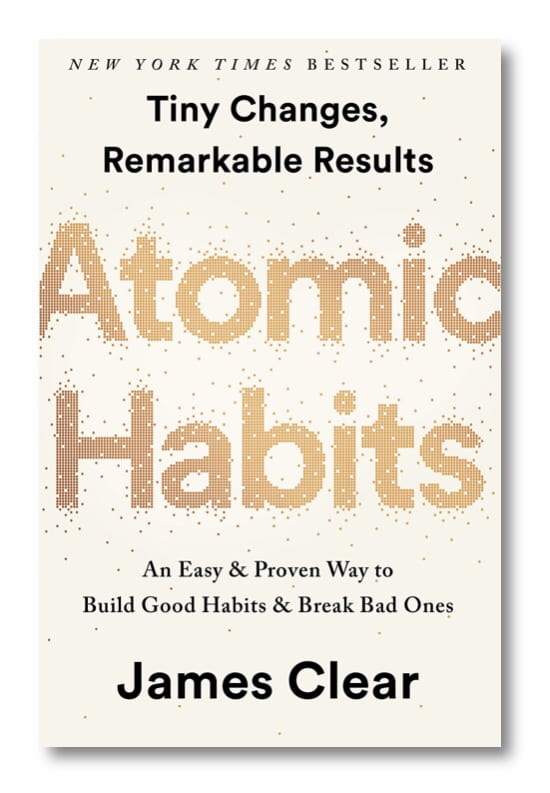
Why is it called Atomic Habits? In a nut shell, the author found success in his own life not by setting huge goals and taking big steps, but by enforcing systems which inch by inch raised him higher and higher, until he created chain reactions and made break throughs. He now shares all of his wisdom in this book, and with it has laid the foundation for our PGP 11 course. Now I believe in making this our focus, the PLP teachers were hoping on instilling these lessons into us so we could apply them to other areas of our lives, but ironically I have found use for them in my PGP course. When we first were given the book, I was prepared to dive in quickly and make big changes as I had with our Time Blocking unit of last year. After reading it however, I realized that implementing these lessons should be done one step at a time, not through big goals but through little systems.

If I had to give an overall review of this work, I’d give it a solid 7 or 8/10. It was easy to read, had engaging visuals and examples, and portrayed powerful messages in a
comprehensible way. It is also outlined everything in an orderly fashion, beginning with a description of what exactly a habit is:
“Habits are, simply, reliable solutions to recurring problems in our environment.”
It also explained why habits are some of the most useful things you can create for yourself:
“Habits reduce cognitive load and free up mental capacity, so you can allocate your attention to other tasks.”
Even in this first definition I found myself developing a greater understanding of this book’s message, as I never truly believed before this that habits are something one can control. I also found a powerful quote that struck a chord with me:
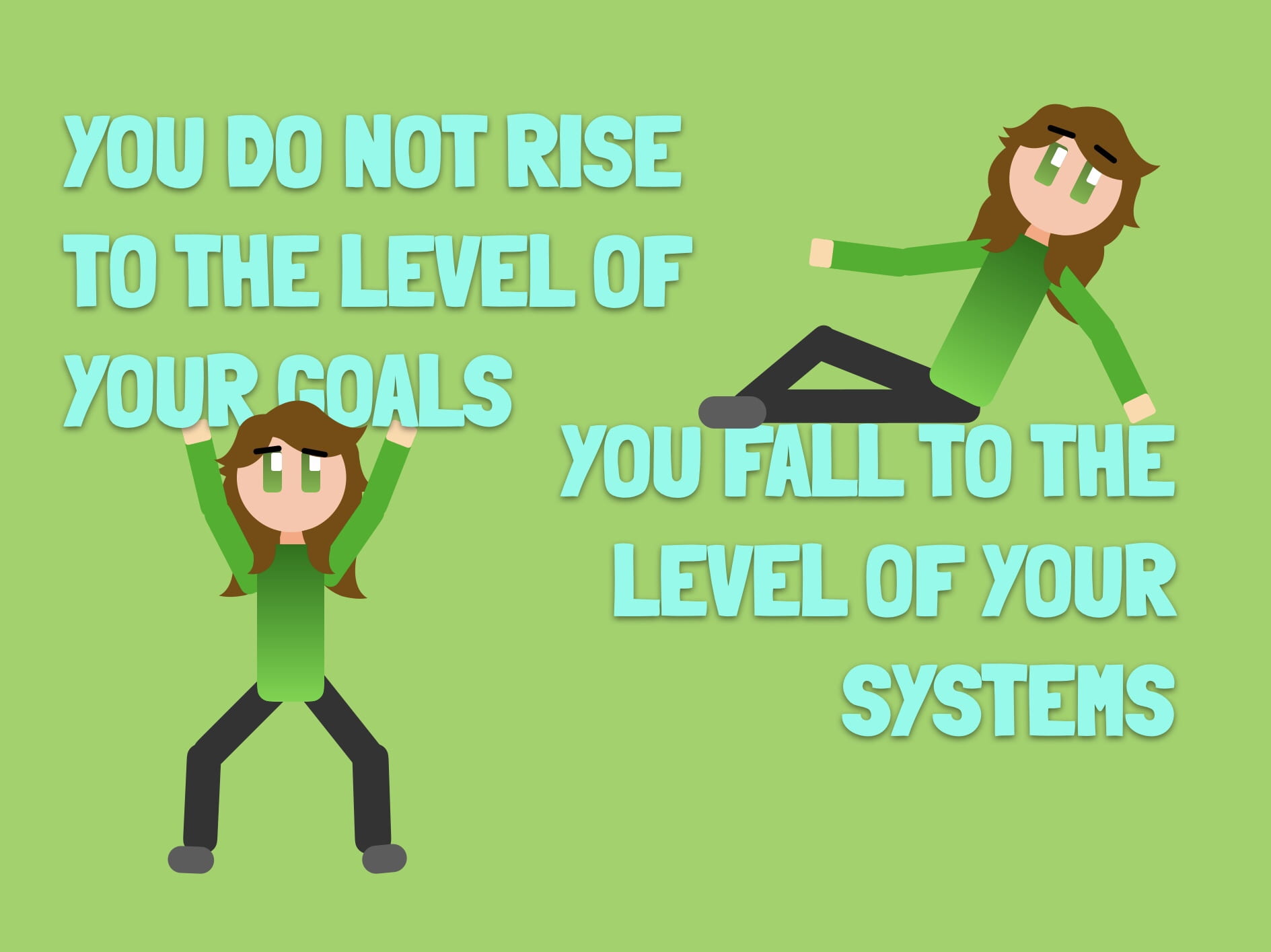
It stuck out to me because in reading it I suddenly could make sense of why I am so attached to time blocking. I now understand why, despite my life for the past year and a half being insanely busy, I rarely feel like it is too much work; because I have systems that carry the weight of the work for me. All I have to do is be in the present and work hard on whatever my schedule is telling me, and it will all fly by with ease. I’m so glad that I learned this, because now I can further improve my scheduling to become as easy and automatic as possible.
In reading this book, I also decided to improve upon something I have spoken about in the past, which is to take notes on details within texts as well as the big picture. How I did this was by recording summaries of every chapter to make sure I grasped the key ideas, but then I also took pictures of diagrams and recorded specific quotes. This proved to be a useful thing to do, because in writing this blog I now have a strong big picture understanding and a lot of examples to work with.

After the book introduced what a habit is, it began to explain how you can enforce one. According to Clear, all habits follow a strict pattern:
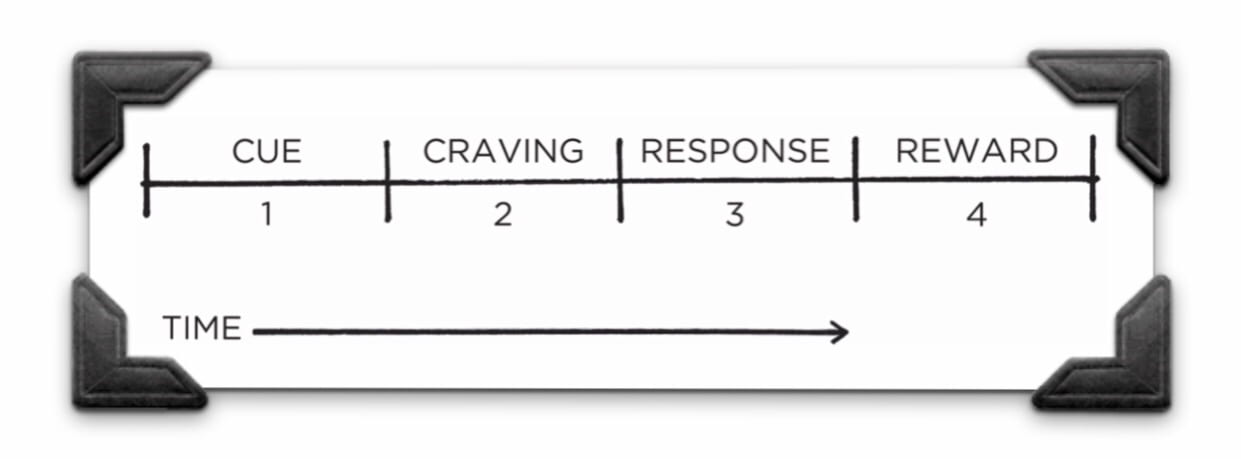
Although this seems like a pretty simple concept, I came to realize that it is crucial to understand if you want to build strong habits. This is especially true with the first step, because a habit will cease to be remembered at all if there is nothing to trigger it. I was able to apply this understanding to my own life with the example of remembering to bring my trumpet to school. It isn’t a hard task to do, and is important to complete on many days, but for some reason time and time again I wouldn’t do it. This was because I would forget as there was no obvious cue to trigger me. Recently, I have added to my Things to-do list to put it by the door every night before a band day, and it has worked wonders.

“The more attractive an opportunity is, the more likely it is to become habit-forming.” writes Clear at the beginning of the second section. Although I agreed with what he said, this concept was an instant turn off for how seriously I was going to consider this part of the book. I was under the impression that he was trying to say habits always need to have a reward behind them or they won’t be completed. Once again, my habits all fall into a system which happen on autopilot no matter how I am feeling, so I thought this wouldn’t apply to me. However, after reading more into the chapter, I started to understand what he really meant is that rewards are a great way of getting habits started before they become automatic. In the future, I could make the process of getting habits started a lot less painful by considering this useful information.
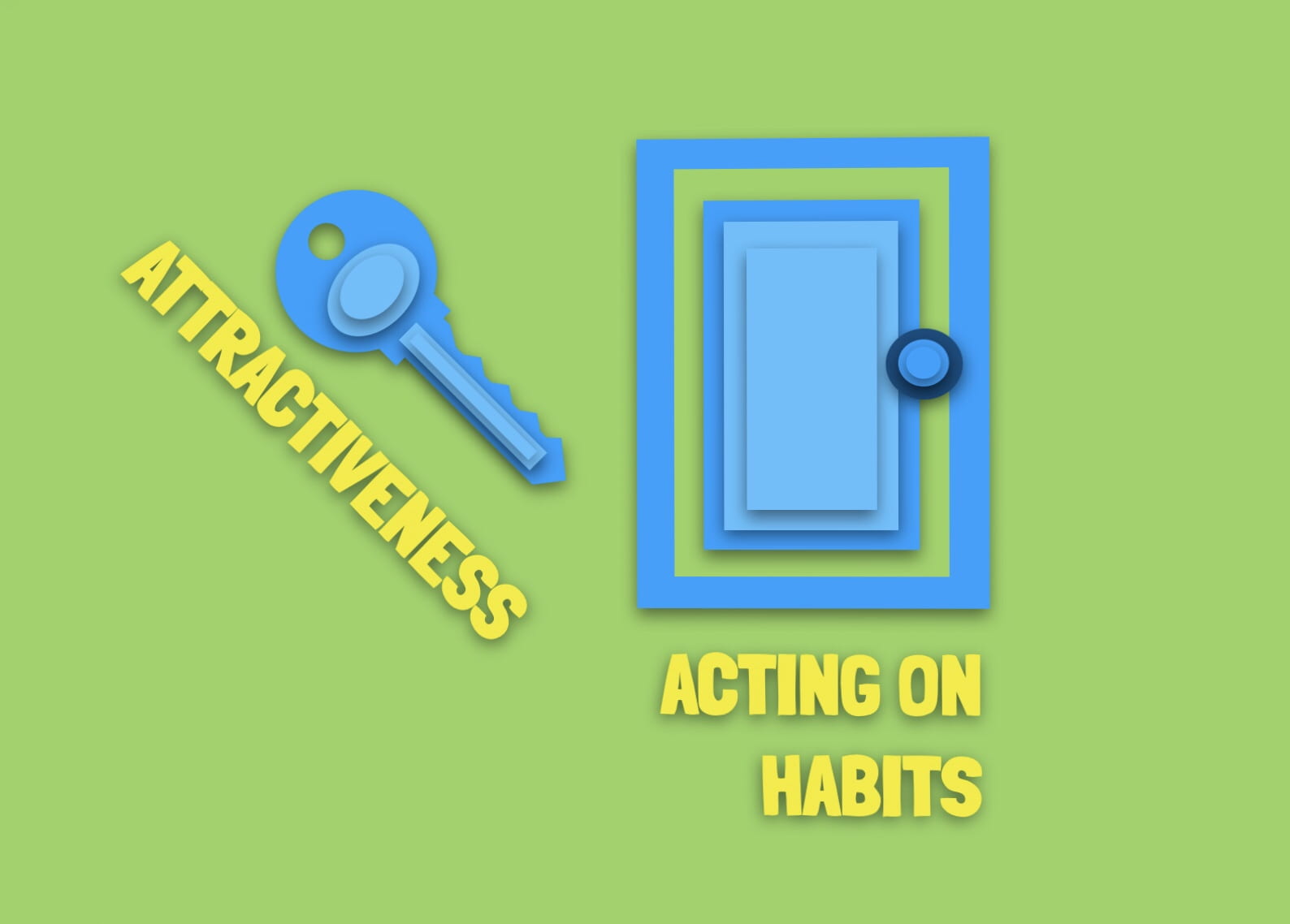
But this wasn’t the only useful information to come out of section two. After talking about all the benefits rewards can have for a good habit, Clear said “The inversion of the 2nd Law of Behaviour Change is make it unattractive.” This was where I found the biggest takeaway, as I realized there are bad habits I have that can’t be controlled be a schedule (e.g. biting nails), and that if by some way I can make them unattractive my subconscious will stop doing them.

Imagine you are going to watch your favourite TV show. You saw an ad for a new season (cue), you want to know what happens to all of your favourite characters (craving), and your getting ready to turn on the TV when you realize it’s broken. All of the sudden, your desire to complete this action is stifled by an obstacle which is too great to be worth the payoff. This scenario demonstrates a concept conveyed within the book by the following quote:
“The more difficult the habit—the more friction there is between you and your desired end state.”
As soon as a habit becomes hard, it’s chances of being repeated drop significantly. In contrast, as the chart below shows, the easier a habit becomes the more likely it is to be repeated:
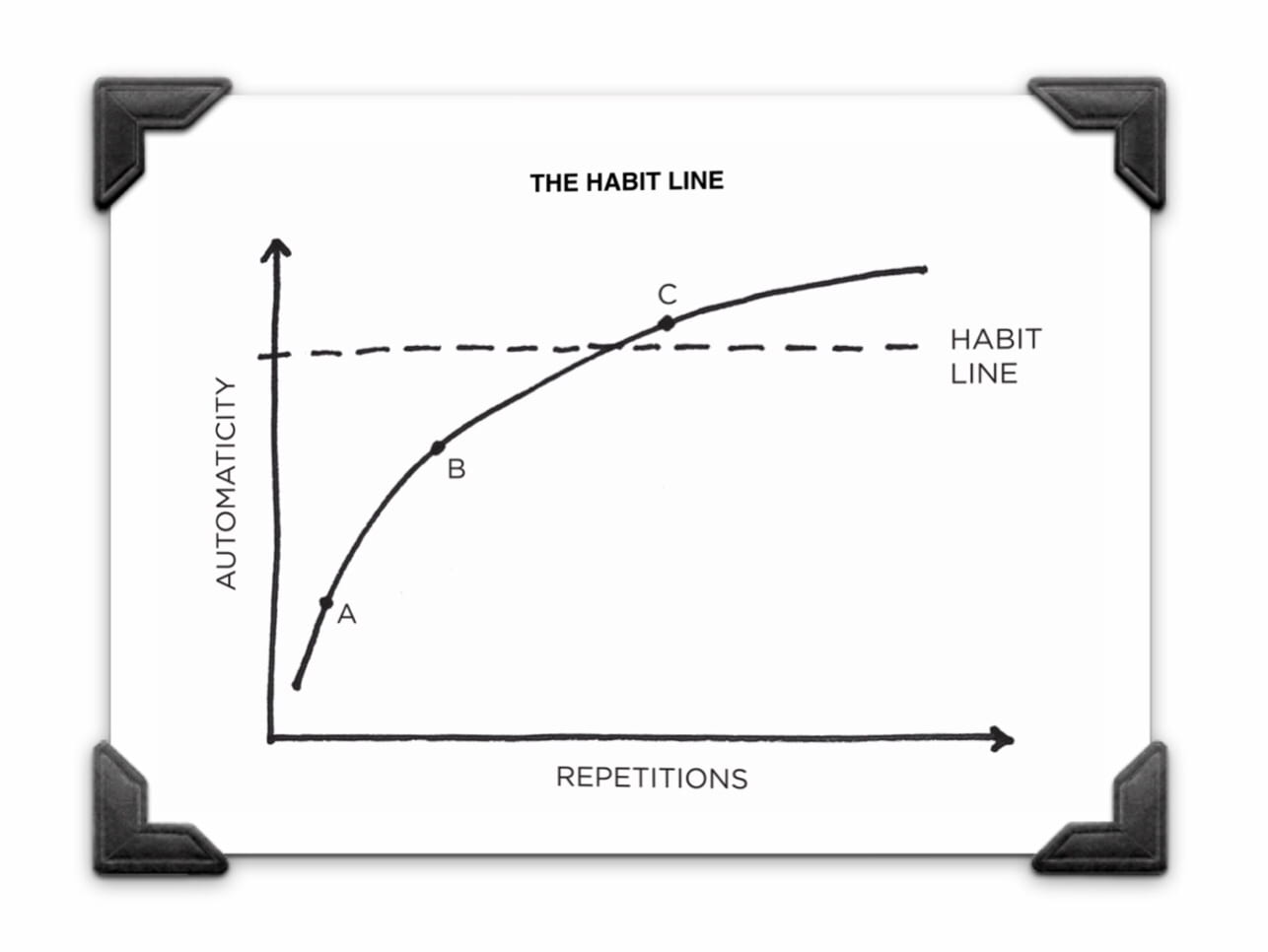
At first, I once again didn’t see the use for this section of the book as I don’t care how hard a task is as long as it is in my system. I then read more into it however, and started to understand that friction doesn’t just occur between your motivation and your habits, but between them and your time as well. For example, I had an hour time block that repeated every weekend which was focused solely on career planning, but it never seemed to get done because I always had work which took priority. I recently realized it was time that was causing the preventative friction to this habit, and have now broken this block down into ten minute nightly segments. It now gets done a lot more frequently.

It’s easy enough to do anything once, but to make a habit repeated you have to come out with a reward that you will be satisfied with in the future. Although making a habit automatic is the end goal, Clear argues that if you want “to get a habit to stick you need to feel immediately successful—even if it’s in a small way.” This is something that I agree with, but don’t think I need to worry about with my habits as the process of doing them is a reward enough for me. Instead, I am going to apply a concept he talked about in relation to satisfaction, The Goldilocks Rule, to other parts of my life.
This concept was something I hadn’t really thought of before, and I now believe that it could be something vital to consider when looking for a career path. I notice at school if a class is too easy or too hard, I become bored or become too overwhelmed and frustrated, which I wouldn’t want to be experiencing every day of my life in a career that is the wrong fit. I will also consider this rule in the classes and activities I will take next year, as I want to find a balance of enjoyment and challenge in my grade 12 year.

Throughout the book, you are prompted with completing small activities to aid in your understanding of creating habits. These include making:
(Click the accordions to learn more)
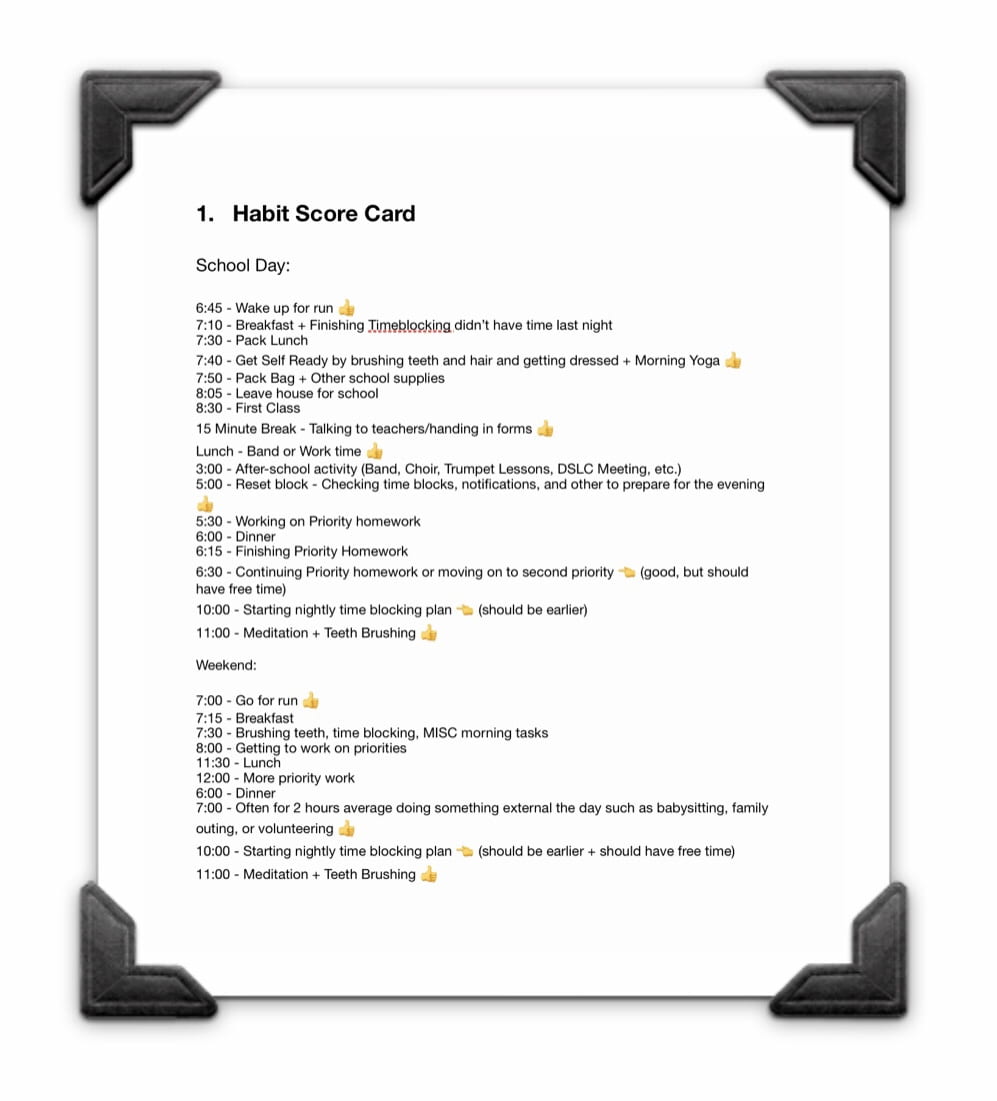
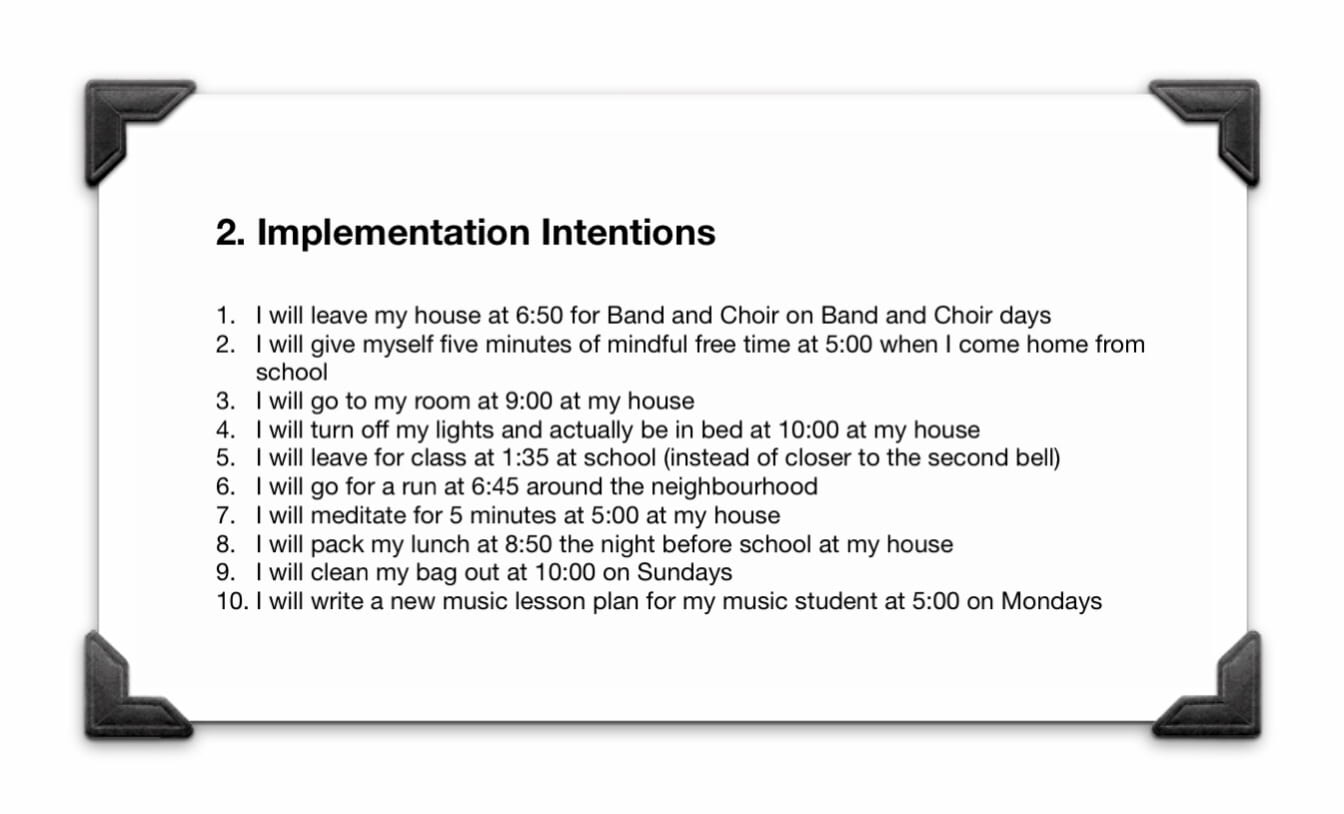
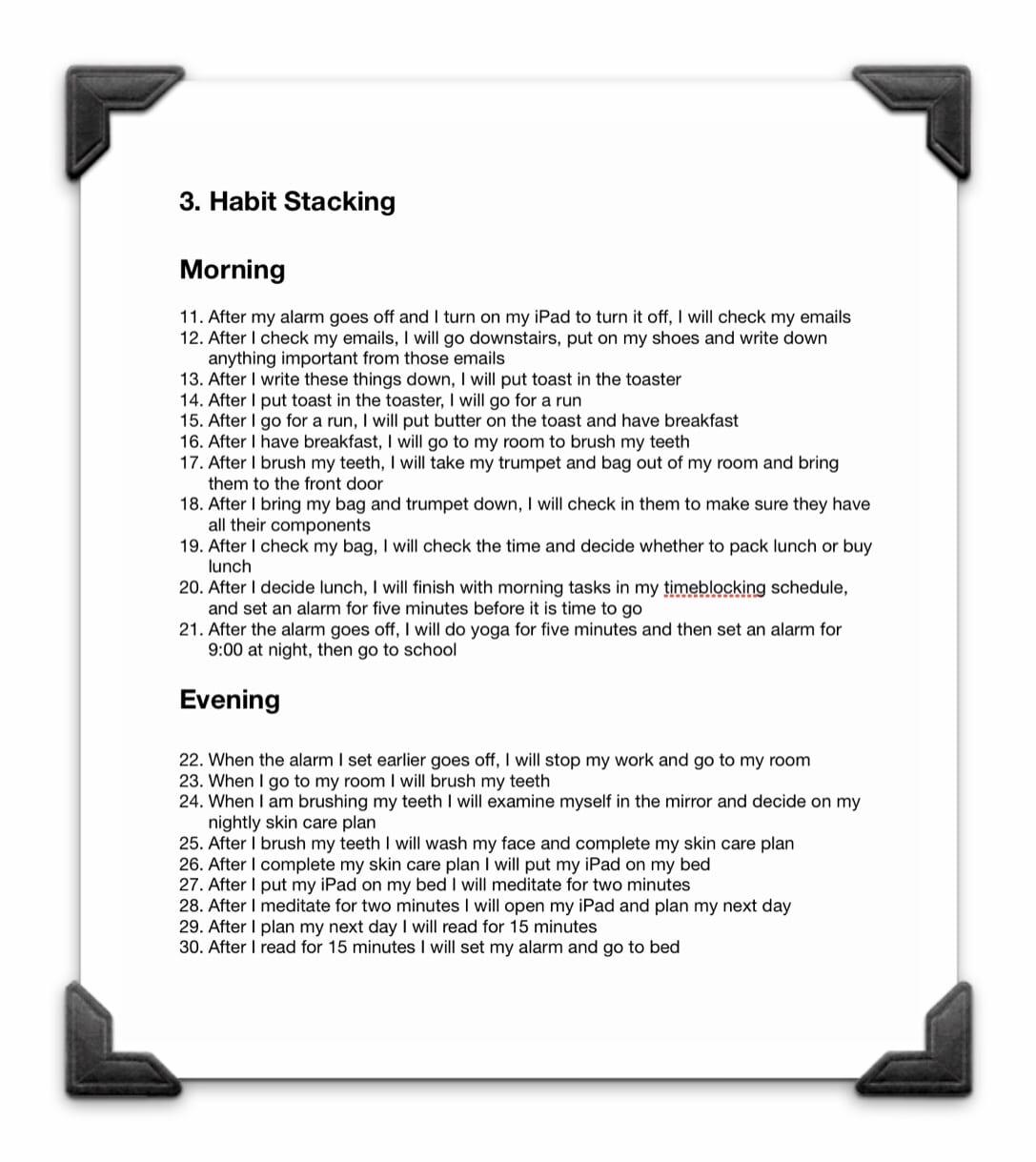


This last law isn’t written in the book, but it is the most important of them all as it is the key takeaway. In the excitement of making great change to your life with habits and contracts and plans, it is often easy to get carried away. In doing so, you will often lose your direction and might make no progress whatsoever. That is why it is crucial to remember that the theme of this book is taking your changes one, bite-sized step at a time. It’s all about building up that chain reaction atom by atom until a breakthrough explodes at atomic force.
I think more than anything this is the takeaway I need to consider. I don’t have a problem with making, sticking to, and solidifying habits in my life; it’s one thing I am quite confident in my ability to do. What I do have a problem with however is pacing myself, and taking the time to get a feel for something before I dive in head first. I often overshoot not just because I am working for a longer period of time than what is required, but more intensely, and this doesn’t help me or my work.
Yet, like I’ve said before, I’m afraid to change. If I can’t see the results as 100% positive, I don’t want to risk the failure. That’s another reason why this book has been so helpful, as the author of it has a pretty similar perspective to me. He is living a life where he always wants to improve and has found systems to be a great way to do so, but he has found success by taking it one step at a time. I now realize that if a New York Times Best Selling Author is doing it, then maybe I can do it too.
And so I’ll finish off today by explaining the progress I am starting to make. No, I haven’t revamped my entire schedule like I did when I discovered Time Blocking, but that isn’t a bad thing. Instead, I’ve been taking manageable steps such as creating a goal setting block in my Weekly Review:
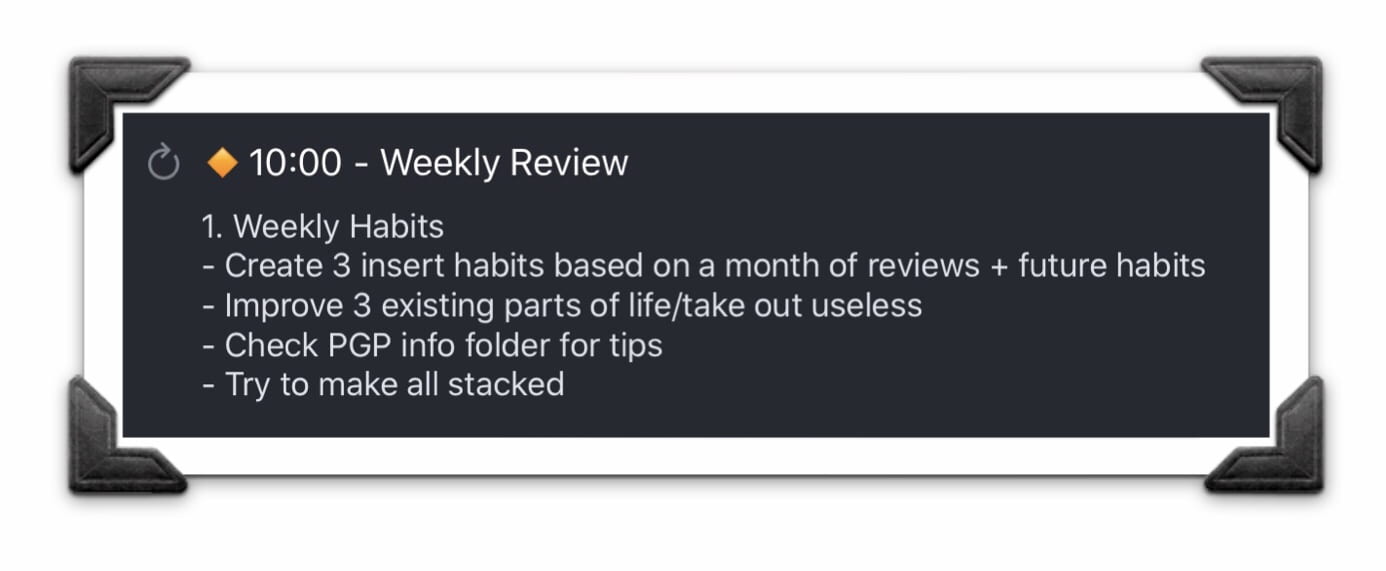
and recording goals I might want to work on in the future instead of trying to complete them all at once:
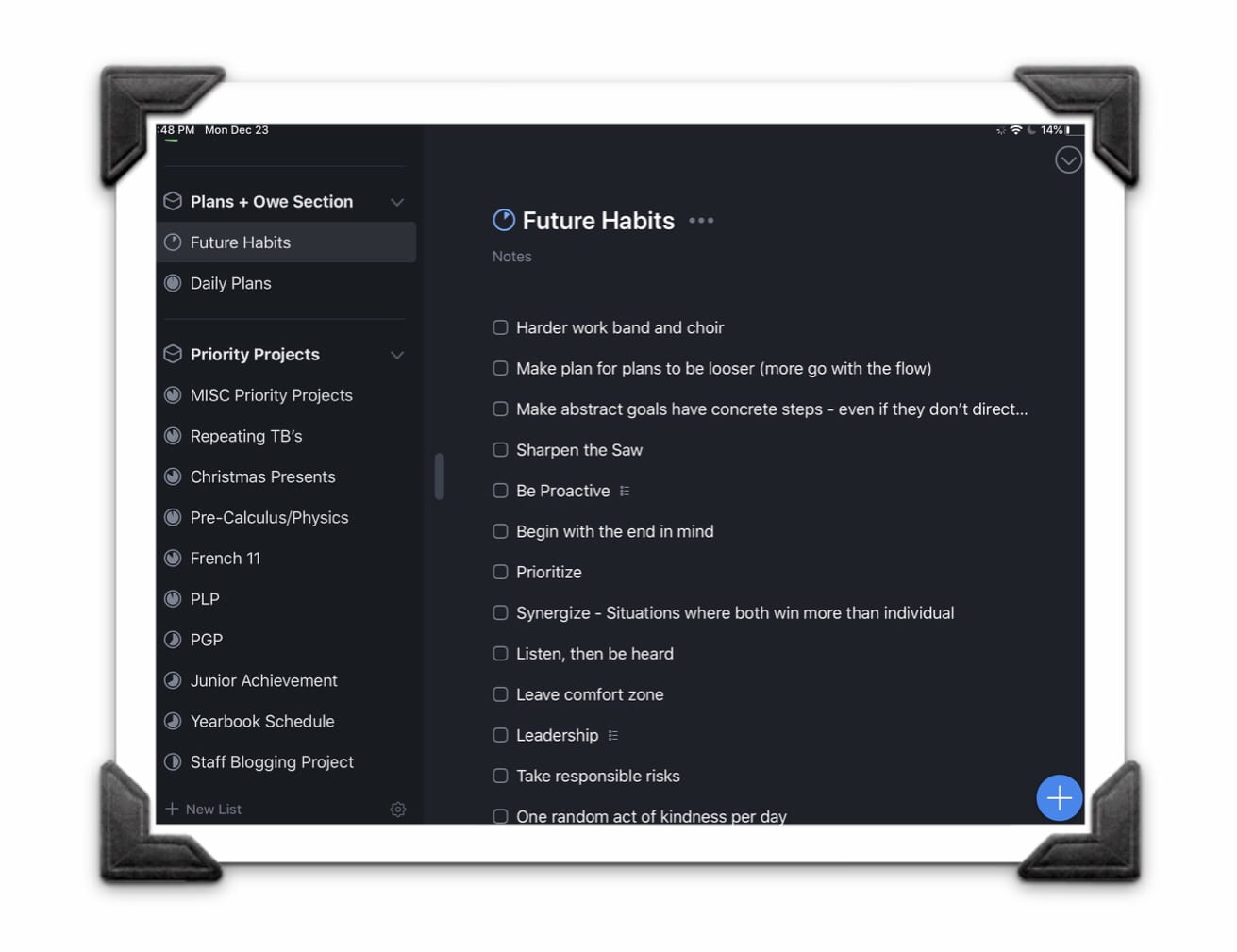
and also by grouping things together into singular repeating to-do’s instead of having them all separate:
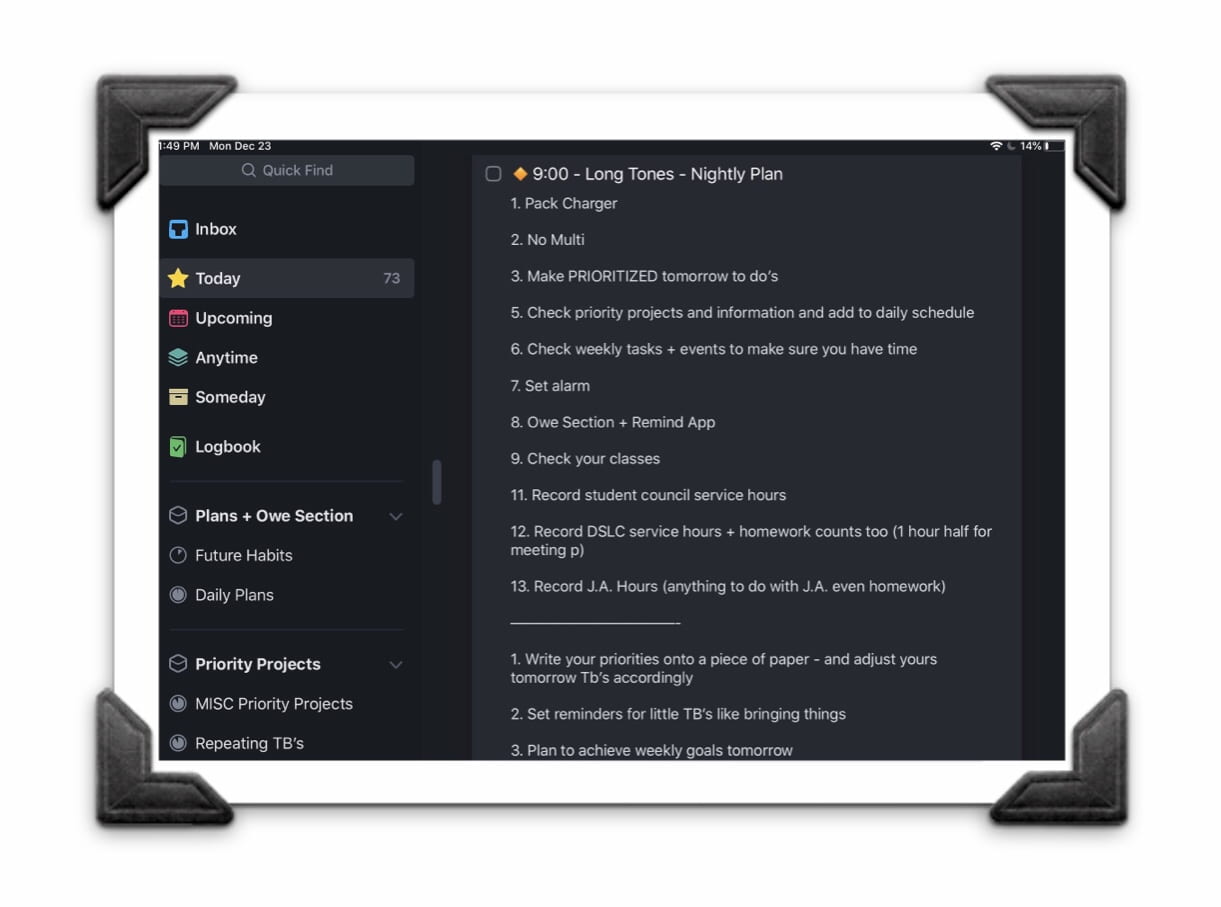
But I know that I still have a long ways to go. There are so many things in my life that will need to change, so many uncertain turns, and so many habits that will need to be implemented. Yet, I’m excited for all of them, because I have the entire year of PGP ahead of me to take it all one step at a time.


